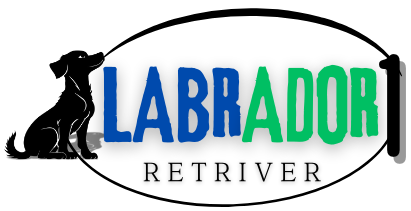Blue Heeler Lab Mix: Temperament, Training Tips & Health Overview
Have you ever looked into a dog’s eyes and instantly felt like he understood you? Like he was more than just a pet, but something deeper – your loyal friend, your training partner, your confidant? If you’re looking for a dog breed that’s active, intelligent, and affectionate, a Blue Heeler and Labrador mix may be the perfect four-legged companion for you.
Commonly known as a Labrador, this mixed breed is known for its energy, intelligence, and unwavering loyalty, making it a great fit for dog owners who live a fast-paced life but want to slow down and enjoy an affectionate cuddle. Before you get a dog, it’s important to understand what makes it special. From temperament and training to care and long-term health, here’s everything you need to know.
Table of Contents
What is a Blue Heeler Lab Mix?
A Blue Heeler Lab Mix is a hybrid breed resulting from the combination of a Blue Heeler (Australian Cattle Dog) and a Labrador Retriever. Each parent breed brings a unique set of characteristics, and when combined, they form an intelligent, energetic, and fiercely loyal dog.
Origins and History
The Blue Heeler was bred in Australia to herd cattle in harsh environments. These dogs are rugged, resilient, and intensely driven. On the other hand, the Labrador Retriever—originally a fisherman’s helper from Newfoundland—became America’s most popular dog due to its friendly nature and boundless enthusiasm.
When you mix the two together, you get a dog that was born to work but lives for love.
General Appearance
Most Labraheelers are medium-sized with strong, muscular bodies. Their coats can range in color from solid black or chocolate to blue-speckled or even merle. Their eyes are alert, their stance confident, and their ears may be floppy like a Lab’s or semi-erect like a Heeler’s.
Typical Size Table
| Age (Months) | Weight Range (lbs) | Height (inches) |
|---|---|---|
| 3 | 20–30 | 10–12 |
| 6 | 35–50 | 14–18 |
| 12 (Adult) | 45–65 | 18–24 |
Blue Heeler Lab Mix Temperament: What to Expect

Understanding a dog’s personality helps you build a better relationship. The Blue Heeler Lab Mix isn’t just smart—it’s sharp, emotionally intuitive, and often driven by purpose.
Personality Traits
- Loyal to the core: This dog bonds deeply with its family, often shadowing you throughout the house.
- Protective but not aggressive: While generally friendly, it may be cautious around strangers.
- Emotionally attuned: These dogs pick up on your moods, which makes them ideal emotional support animals if properly trained.
Energy Levels and Behavior
You’re not looking at a couch potato here. This breed thrives on activity.
- Needs a minimum of 90–120 minutes of exercise daily
- Loves interactive games: fetch, agility, and puzzle toys
- May herd kids or other pets—it’s in their DNA!
If under-stimulated, they may resort to destructive behaviors like digging, barking, or chewing.
Training Tips for Your Blue Heeler Lab Mix
Bringing home a Labraheeler is like getting a high-performance vehicle—you need to know how to handle it. This breed excels when you provide structure, positive reinforcement, and consistency.
Start Early
- Begin training as early as 8 weeks old.
- Early exposure to different sounds, sights, people, and pets can reduce anxiety. Crate training can help with house training and provide a safe place.
- Crate training can help with house training and provide a safe place.
Best Training Techniques
- Positive reinforcement only: Harsh discipline can make them stubborn or anxious.
- Combine clickers or verbal cues such as “yes!” with high-value treats.
- Keep sessions short and varied—10 to 15 minutes, 2–3 times daily.
Common Behavioral Challenges
You may encounter:
- Herding tendencies: Nipping at heels, especially kids.
- Stubbornness: Especially if they sense inconsistency or unfair treatment.
- Separation anxiety: These dogs love their humans and hate being alone for long.
Socialization and early training are non-negotiable for long-term success.
Health Overview: How to Keep Your Labraheeler Thriving

This mix can be incredibly healthy, but like all breeds, it has its susceptibilities. You play a big role in preventing issues by being proactive.
Common Health Issues
- Hip and Elbow Dysplasia: Common in both parent breeds.
- Progressive Retinal Atrophy (PRA): Causes gradual vision loss.
- Allergies: Skin irritations and food sensitivities can pop up.
Keeping a close eye on symptoms and scheduling annual vet visits will help you catch any red flags early.
Preventative Care Tips
- Schedule vet checkups at least twice a year
- Stay up to date on vaccinations and flea/tick prevention
- Invest in pet insurance early—it’s worth it
Nutrition and Diet Guide
Feeding your Blue Heeler Lab Mix the right food ensures their energy levels, joint health, and mental sharpness stay optimal.
Healthy Dog Food Table
| Food Brand | Protein % | Grain-Free | Suitable Age | Notable Features |
|---|---|---|---|---|
| Blue Buffalo | 26% | Yes | All stages | High-quality meat protein |
| Orijen Original | 38% | Yes | Adult dogs | Biologically appropriate |
| Hill’s Science | 24% | No | Puppies | Vet-formulated & gentle |
Avoid overfeeding—a fit Labraheeler is a happy one. Their joints and heart will thank you later.
Grooming and Maintenance Needs
This breed is low-maintenance but not no-maintenance. Routine care goes a long way in keeping them healthy and looking sharp.
Coat Care
- Brush once a week: More during shedding seasons (spring and fall)
- A slicker brush can help control loose hair and reduce dander.
- Bathe every 6-8 weeks or following muddy play sessions.
Dental and Nail Care
- Brush teeth 2–3 times per week with dog-safe toothpaste
- Trim nails every 3–4 weeks to avoid cracking or overgrowth
- Clean ears weekly to prevent infections, especially if they’re floppy
Is a Blue Heeler Lab Mix Suitable for You?

Choosing the right dog breed is more than just cuteness; it is also about compatibility. Are you prepared for the challenges and rewards of raising a Labraheeler?
Ideal Owners
- Active singles, couples, or families with older children
- Owners with access to a fenced yard or dog park
- People with time and patience for daily training and play
Pros and Cons List
Pros:
- Extremely intelligent and trainable
- Loyal and emotionally connected to you
- Excellent hiking or jogging partner
Cons:
- Requires a lot of exercise and stimulation
- Can be vocal and stubborn if bored
- Not ideal for first-time dog owners or sedentary households
FAQs About Blue Heeler Lab Mix

Are Blue Heeler Lab Mixes good with kids?
Yes, especially when socialized early. Their protective and affectionate nature makes them great for active families. However, monitor play to manage herding instincts.
How much exercise does a Labraheeler need?
They require at least 1-2 hours of physical activity each day. Walks alone are insufficient; incorporate mental games, obedience drills, and interactive toys.
How long do Blue Heeler Lab Mixes live?
With proper care, they live 12–16 years. Good genetics, quality food, and regular vet visits can push them toward the upper end.
Do they bark a lot?
They’re moderate barkers—vocal when bored, excited, or sensing something unusual. Training can reduce unnecessary barking.
Conclusion: Your Life with a Blue Heeler Lab Mix
Owning a Blue Heeler Lab Mix is a journey—a deeply fulfilling one that challenges you to grow right alongside your dog. With their sharp mind, boundless energy, and heartfelt loyalty, Labraheelers are more than pets. They’re partners in every sense of the word.
If you’re ready to match their commitment, offer them the structure they crave, and make room for a new kind of love, then it’s time to welcome one into your life.







